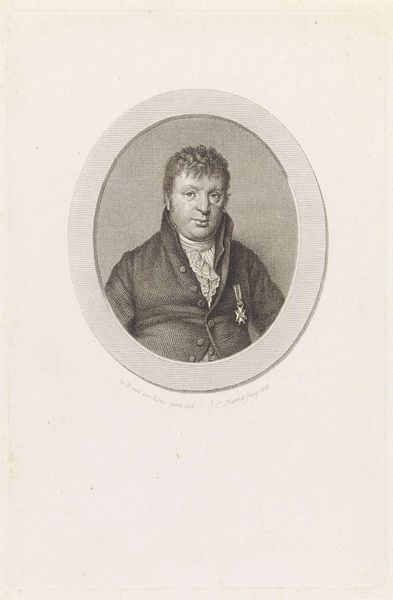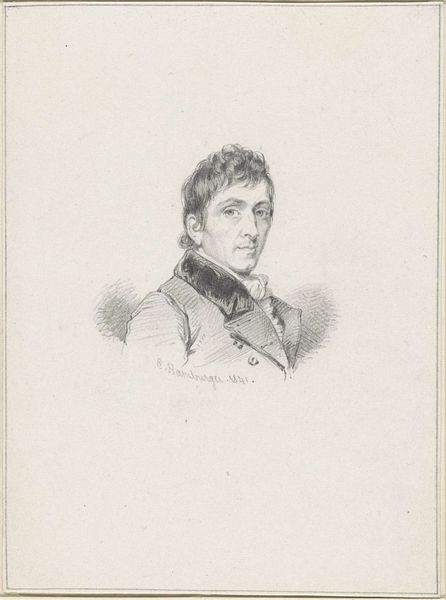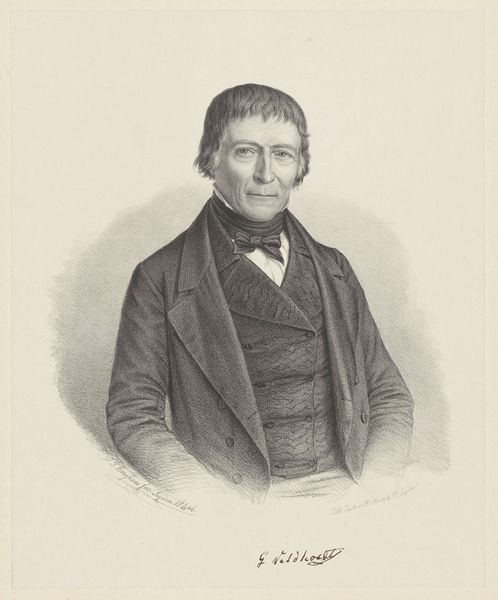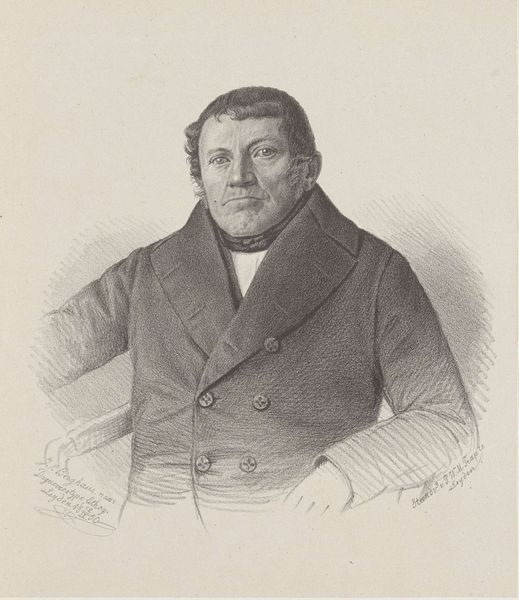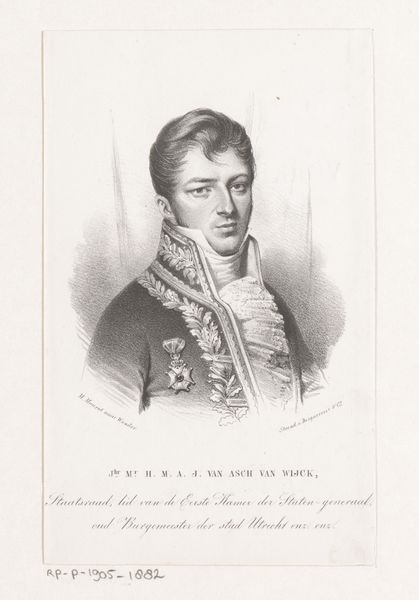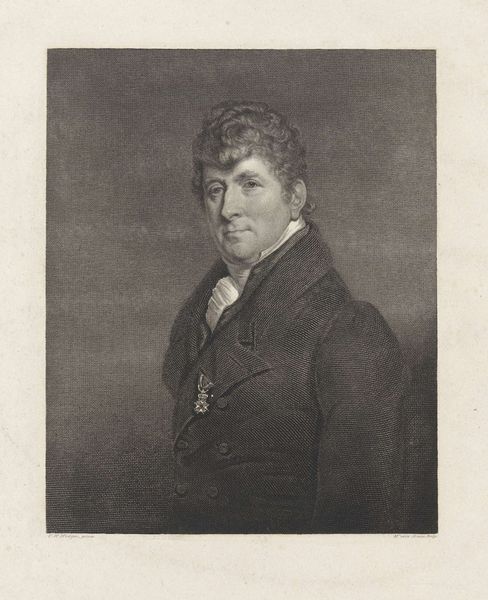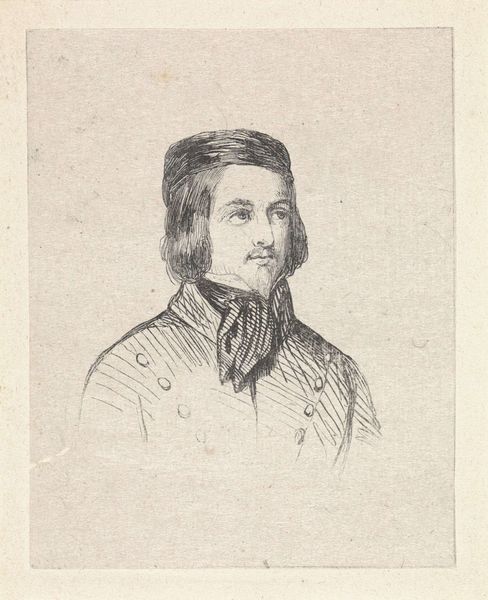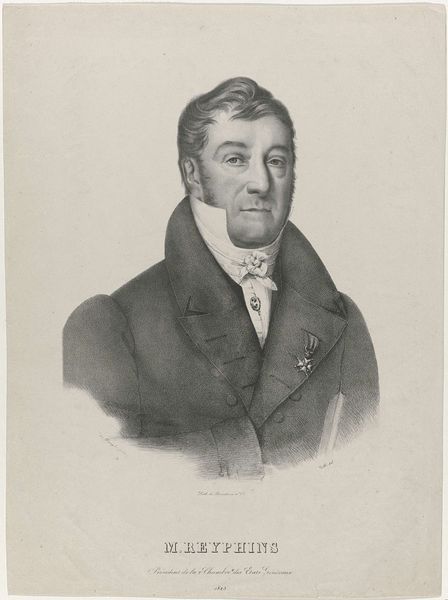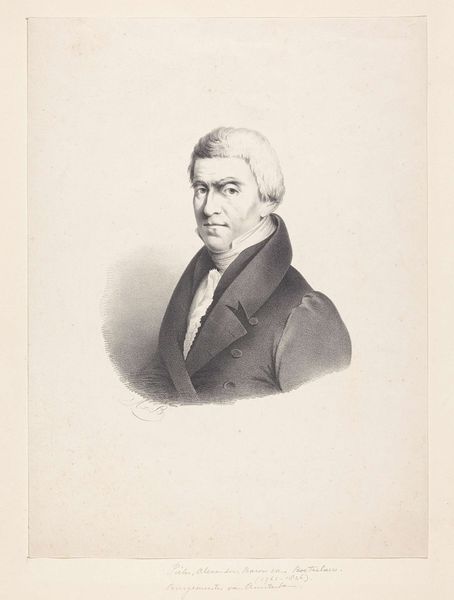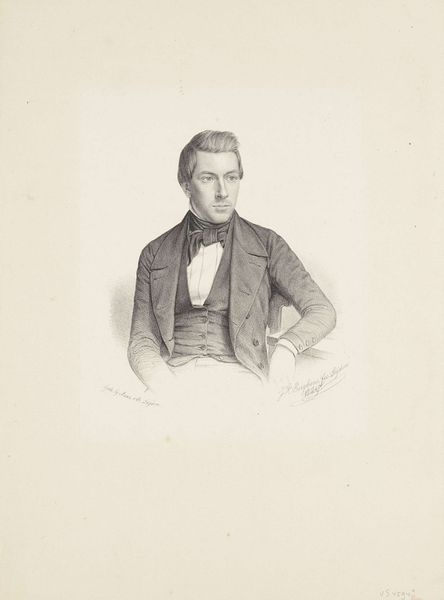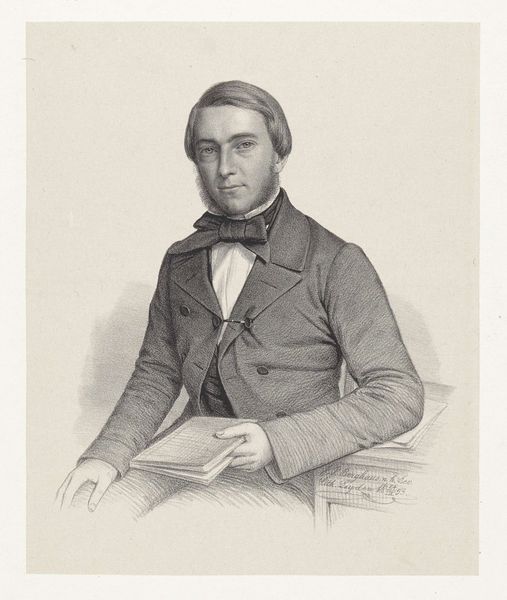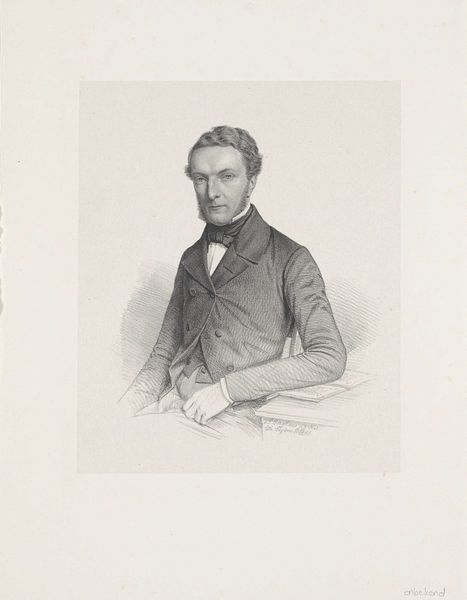
Portret van de Mexicaanse guerillaleider Francisco Javier Mina 1776 - 1851
0:00
0:00
engraving
#
portrait
#
16_19th-century
#
old engraving style
#
pencil drawing
#
old-timey
#
romanticism
#
19th century
#
portrait drawing
#
history-painting
#
engraving
Dimensions: height 76 mm, width 75 mm
Copyright: Rijks Museum: Open Domain
Curator: So, here we have Daniël (I) Veelwaard's "Portret van de Mexicaanse guerillaleider Francisco Javier Mina," an engraving dating back to somewhere between 1776 and 1851. You get a sense of that historical timeframe purely from the texture. Editor: That intense gaze hits you first, doesn’t it? Almost melancholy. And the oval frame lends it a sort of cameo feeling – like a memento from a lost world. It makes me wonder about the story behind it. Curator: Indeed. The engraving medium itself contributes to the crispness, the precision of the lines. Note the almost stippled effect used to create tonal variations on Mina's face and attire, constructed around form and light. It also invokes a sort of "history painting" sensibility, as history of the era often drew upon ideas of romanticism. Editor: Absolutely. It is hard to disassociate that romantic sensibility of historical painting here! There’s a dreaminess there, but also a certain stoicism, wouldn’t you say? And a youthful almost vulnerability, oddly juxtaposed with the sense of leadership. Guerilla fighter—quite the contrary impression at first! Curator: Precisely the tension Veelwaard masterfully achieves through form and detail. Consider the placement of the head, the gaze directed slightly away from the viewer – signaling contemplation, interiority. It pulls away from simple representation into something far more psychological and resonant. Editor: And even technically—engraving portraits always boggles my mind a bit—all that painstaking detail to carve that image! Did he actually encounter Mina or work from an intermediary reference? So fascinating to consider what those intermediate stages looked like. Curator: The details about reference are currently obscured. But even without knowing the specifics of the portrait's genesis, the visible marks of Veelwaard's artistic choices provide a compelling access point. How the technique interacts with the form tells us so much about the values inherent to 19th-century art. Editor: Right, right. You know, it makes you appreciate those subtle markers of character. But beyond theory and all that jazz, this is just a pretty stunning engraving! Full stop. Curator: Aesthetically pleasing, no doubt, but so theoretically enriching. Editor: An interesting marriage of thought and execution then? Curator: Without a doubt. A valuable moment where aesthetics serve analysis and vice versa.
Comments
No comments
Be the first to comment and join the conversation on the ultimate creative platform.
